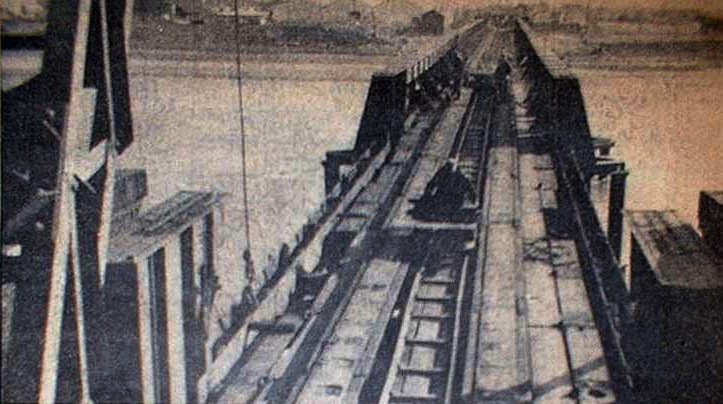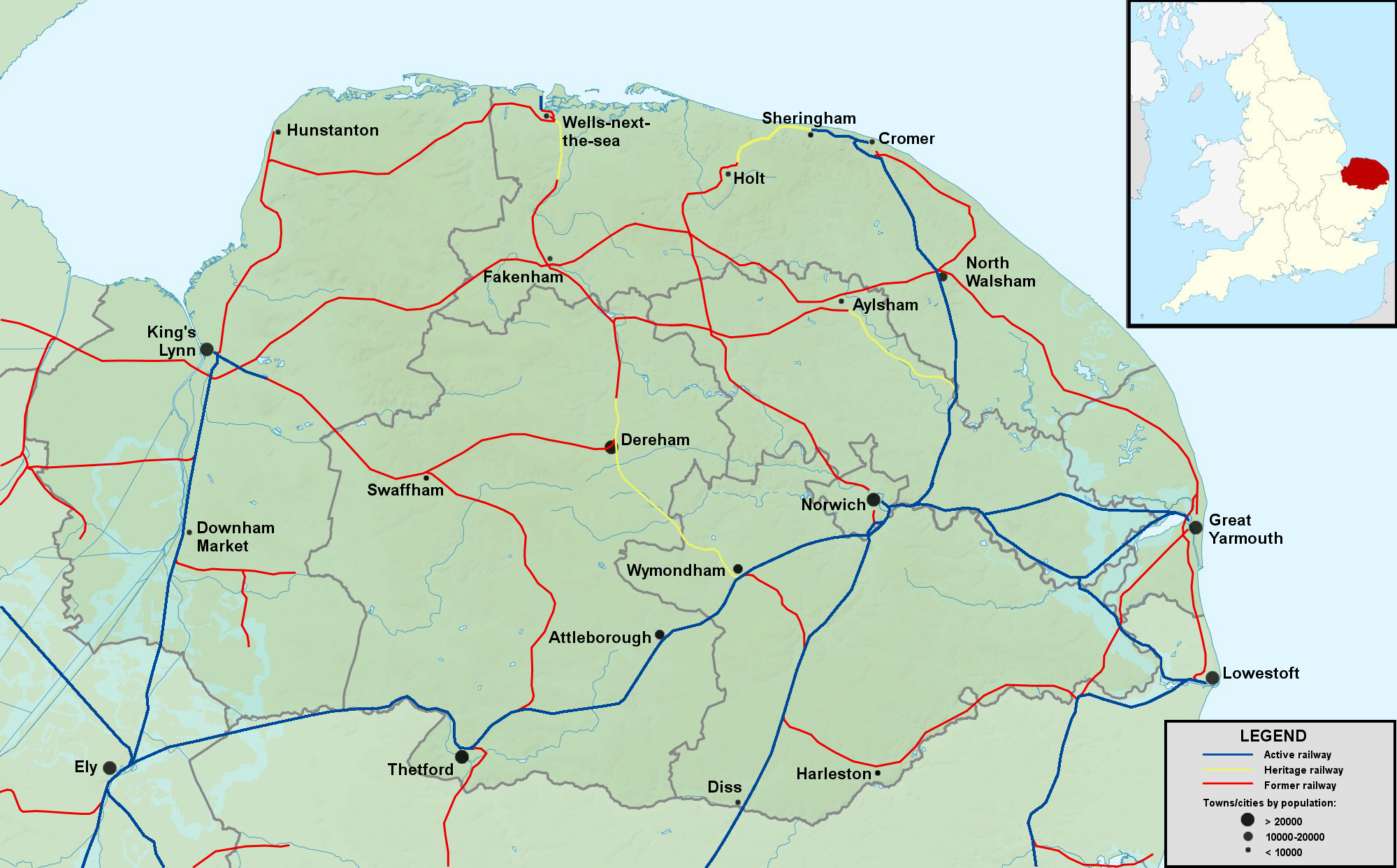|
South Lynn Railway Station
South Lynn railway station was a railway station serving the areas of South Lynn and West Lynn in King's Lynn in Norfolk, England. The station was on the Midland and Great Northern Joint Railway. History The Lynn & Sutton Bridge Railway was authorised on 6 August 1861, to build a line between those points. It was opened between and in November 1864; passenger trains began on 1 March 1866. The first station after King's Lynn was West Lynn, which was located at the western end of the bridge over the Great Ouse; that station was closed on 1 July 1886. The station at South Lynn was opened on 1 January 1886 along with other improvements in the area. South Lynn station was closed to passengers on 2 March 1959. It was located at the southern end of King's Lynn, and saw far less traffic than King's Lynn railway station. Routes See also * King's Lynn railway station * List of closed railway stations in Norfolk This is a list of closed railway stations in Norfolk, Englan ... [...More Info...] [...Related Items...] OR: [Wikipedia] [Google] [Baidu] |
GER Class S69
The Great Eastern Railway (GER) Class S69, also known as 1500 Class, and later classified B12 by the London and North Eastern Railway (LNER) is a class of 4-6-0 steam locomotive designed to haul express passenger trains from London Liverpool Street station along the Great Eastern Main Line. Originally they were designed by S. D. Holden, but were much rebuilt, resulting in several subclasses. Seventy-one S69 locomotives were built between 1911 and 1921 and numbered 1500–1570. Fifty-one of these were built at the GER's Stratford Works and the remaining 20 by William Beardmore and Company. A further 10 locomotives were built by Beyer, Peacock and Company for the LNER in 1928 and numbered 8571–8580. From 1948 the British Railways numbers were 61500–61580 (with gaps). Background At the time of their introduction, the "Claud Hamilton" 4-4-0s were becoming outclassed on the heaviest express. Although an enlarged 4-4-0 design was mooted, it was realised that any such design wou ... [...More Info...] [...Related Items...] OR: [Wikipedia] [Google] [Baidu] |
King's Lynn Railway Station
King's Lynn railway station is the northern terminus of the Fen line in the east of England, serving the town of King's Lynn, Norfolk. It is from and measured from London Liverpool Street. The station and most trains calling are operated by Great Northern (with service to and from ), with some additional peak services being operated by Greater Anglia (to and from London Liverpool Street). It has been the only station in the town since the closure of South Lynn railway station in 1959. Early growth The Act for the Lynn and Ely Railway received Royal Assent on 30 June 1845. Work started on the line in 1846 and so the railway arrived at Lynn on 27 October 1846. The original line ran South to Downham with the first station after Lynn being St Germain's. It took another two years to reach Ely. Great Eastern Railway. Lynn, when opened was a Joint station (Lynn & Ely and Lynn & Dereham). However, on 22 July 1847 the Lynn & Ely and Lynn & Dereham were amalgamated to form the E ... [...More Info...] [...Related Items...] OR: [Wikipedia] [Google] [Baidu] |
Railway Stations In Great Britain Opened In 1886
Rail transport (also known as train transport) is a means of transport that transfers passengers and goods on wheeled vehicles running on rails, which are incorporated in tracks. In contrast to road transport, where the vehicles run on a prepared flat surface, rail vehicles (rolling stock) are directionally guided by the tracks on which they run. Tracks usually consist of steel rails, installed on sleepers (ties) set in ballast, on which the rolling stock, usually fitted with metal wheels, moves. Other variations are also possible, such as "slab track", in which the rails are fastened to a concrete foundation resting on a prepared subsurface. Rolling stock in a rail transport system generally encounters lower frictional resistance than rubber-tyred road vehicles, so passenger and freight cars (carriages and wagons) can be coupled into longer trains. The operation is carried out by a railway company, providing transport between train stations or freight customer facil ... [...More Info...] [...Related Items...] OR: [Wikipedia] [Google] [Baidu] |
Former Midland And Great Northern Joint Railway Stations
A former is an object, such as a template, gauge or cutting die, which is used to form something such as a boat's hull. Typically, a former gives shape to a structure that may have complex curvature. A former may become an integral part of the finished structure, as in an aircraft fuselage, or it may be removable, being using in the construction process and then discarded or re-used. Aircraft formers Formers are used in the construction of aircraft fuselage, of which a typical fuselage has a series from the nose to the empennage, typically perpendicular to the longitudinal axis of the aircraft. The primary purpose of formers is to establish the shape of the fuselage and reduce the column length of stringers to prevent instability. Formers are typically attached to longerons, which support the skin of the aircraft. The "former-and-longeron" technique (also called stations and stringers) was adopted from boat construction, and was typical of light aircraft built until the a ... [...More Info...] [...Related Items...] OR: [Wikipedia] [Google] [Baidu] |
Railways In Norfolk
Railways have played an important part in the history and development of the English county of Norfolk. It currently has thirty open National Rail stations, though there were once well over a hundred. Between 1959 and 1970 much of the network was closed, including more than two thirds of Norfolk's railway stations, several main lines and most of the branch lines - leaving only a core network in place. Several of the former routes have since been re-opened as heritage railway lines, such as the North Norfolk Railway and the Mid-Norfolk Railway. History Arrival of the railway The railway first arrived in Norfolk in 1845 with a major extension of an existing line from London which previously had stopped short of Cambridge at Bishop's Stortford. The extension had been built in sections by three different companies: the Northern & Eastern Railway (N&ER) — Bishop's Stortford to Newport; the Eastern Counties Railway (ECR) — Newport through Cambridge to Brandon); and the Norwich ... [...More Info...] [...Related Items...] OR: [Wikipedia] [Google] [Baidu] |
List Of Closed Railway Stations In Norfolk
This is a list of closed railway stations in Norfolk, England. There are also a number of heritage railway stations in Norfolk Norfolk () is a ceremonial and non-metropolitan county in East Anglia in England. It borders Lincolnshire to the north-west, Cambridgeshire to the west and south-west, and Suffolk to the south. Its northern and eastern boundaries are the No ..., which have been re-opened by preservation societies. The companies listed are the pre-1923 groupings. Goods stations References {{Unreferenced, date=April 2008 See also * Railways in Norfolk Norfolk railway stations Rail transport in Norfolk Railway stations Norfolk ... [...More Info...] [...Related Items...] OR: [Wikipedia] [Google] [Baidu] |
Gayton Road Railway Station
Gayton Road railway station was a station in Norfolk, located close to King's Lynn on the Midland and Great Northern Joint Railway. History The station opened on 1 July 1887. It was closed on 2 March 1959. The station platforms remain intact as of May 2021. See also * Railways in Norfolk Railways have played an important part in the history and development of the English county of Norfolk. It currently has thirty open National Rail stations, though there were once well over a hundred. Between 1959 and 1970 much of the network w ... References Disused railway stations in Norfolk Former Midland and Great Northern Joint Railway stations Railway stations in Great Britain opened in 1887 Railway stations in Great Britain closed in 1959 {{EastEngland-railstation-stub ... [...More Info...] [...Related Items...] OR: [Wikipedia] [Google] [Baidu] |
Clenchwarton Railway Station
Clenchwarton railway station is a former station in Clenchwarton, Norfolk. It was part of the Midland and Great Northern Joint Railway line from the Midlands to Great Yarmouth Great Yarmouth (), often called Yarmouth, is a seaside town and unparished area in, and the main administrative centre of, the Borough of Great Yarmouth in Norfolk, England; it straddles the River Yare and is located east of Norwich. A pop .... References Disused railway stations in Norfolk Former Midland and Great Northern Joint Railway stations Railway stations in Great Britain opened in 1866 Railway stations in Great Britain closed in 1959 1866 establishments in England {{EastEngland-railstation-stub ... [...More Info...] [...Related Items...] OR: [Wikipedia] [Google] [Baidu] |
Old Railway Bridge
Old Railroad Bridge ( sr, Стари железнички мост, Stari železnički most) is a bridge over the Sava river in Belgrade, the capital of Serbia. It was the first railway bridge in Belgrade and today is one of two across the Sava, and three in general. It is not operational since the summer of 2018. Location From the old, Šumadija section of the city, it crosses the Sava between the southern extension of the Bara Venecija neighborhood, just north of the Belgrade Fair complex. On the Syrmian side, it enters New Belgrade next to the industrial neighborhoods of Savski Nasip and Mala Ciganlija. It is located between the Gazela Bridge on the north and the New Railroad Bridge on the south. History Origin At the 1878 Congress of Berlin, Principality of Serbia was de jure recognized as an independent state from the Ottoman Empire and the great powers of the day decided that Serbia should construct the railway. Not economically developed to begin with, Serbia ... [...More Info...] [...Related Items...] OR: [Wikipedia] [Google] [Baidu] |
River Great Ouse
The River Great Ouse () is a river in England, the longest of several British rivers called "Ouse". From Syresham in Northamptonshire, the Great Ouse flows through Buckinghamshire, Bedfordshire, Cambridgeshire and Norfolk to drain into the Wash and the North Sea near Kings Lynn. Authorities disagree both on the river's source and its length with one quoting and another . Mostly flowing north and east, it is the fifth longest river in the United Kingdom. The Great Ouse has been historically important for commercial navigation, and for draining the low-lying region through which it flows; its best-known tributary is the Cam, which runs through Cambridge. Its lower course passes through drained wetlands and fens and has been extensively modified, or channelised, to relieve flooding and provide a better route for barge traffic. The unmodified river would have changed course regularly after floods. The name ''Ouse'' is from the Celtic or pre-Celtic *''Udso-s'', and probably me ... [...More Info...] [...Related Items...] OR: [Wikipedia] [Google] [Baidu] |






